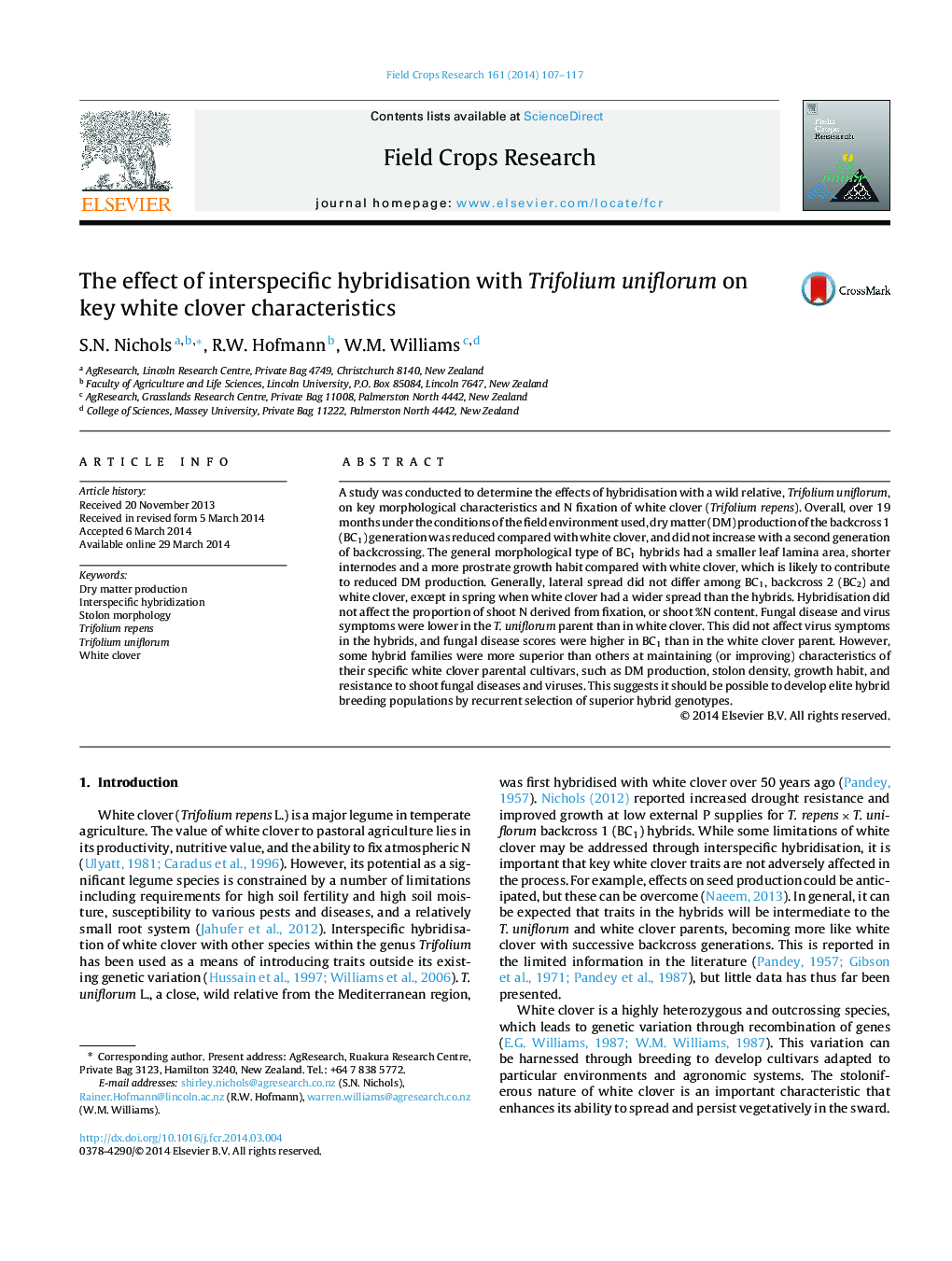| کد مقاله | کد نشریه | سال انتشار | مقاله انگلیسی | نسخه تمام متن |
|---|---|---|---|---|
| 4510033 | 1624702 | 2014 | 11 صفحه PDF | دانلود رایگان |

• In general, hybridisation decreased DM production of white clover.
• Backcross 1 hybrids had smaller leaves, shorter internodes, and were more prostrate.
• Many traits showed variation among individual hybrid families.
• Variation in key white clover traits could be used to select elite hybrid populations.
• Hybridisation did not affect nitrogen fixation.
A study was conducted to determine the effects of hybridisation with a wild relative, Trifolium uniflorum, on key morphological characteristics and N fixation of white clover (Trifolium repens). Overall, over 19 months under the conditions of the field environment used, dry matter (DM) production of the backcross 1 (BC1) generation was reduced compared with white clover, and did not increase with a second generation of backcrossing. The general morphological type of BC1 hybrids had a smaller leaf lamina area, shorter internodes and a more prostrate growth habit compared with white clover, which is likely to contribute to reduced DM production. Generally, lateral spread did not differ among BC1, backcross 2 (BC2) and white clover, except in spring when white clover had a wider spread than the hybrids. Hybridisation did not affect the proportion of shoot N derived from fixation, or shoot %N content. Fungal disease and virus symptoms were lower in the T. uniflorum parent than in white clover. This did not affect virus symptoms in the hybrids, and fungal disease scores were higher in BC1 than in the white clover parent. However, some hybrid families were more superior than others at maintaining (or improving) characteristics of their specific white clover parental cultivars, such as DM production, stolon density, growth habit, and resistance to shoot fungal diseases and viruses. This suggests it should be possible to develop elite hybrid breeding populations by recurrent selection of superior hybrid genotypes.
Journal: Field Crops Research - Volume 161, May 2014, Pages 107–117